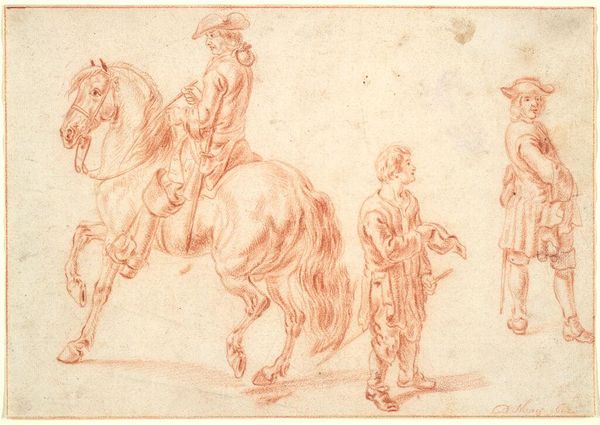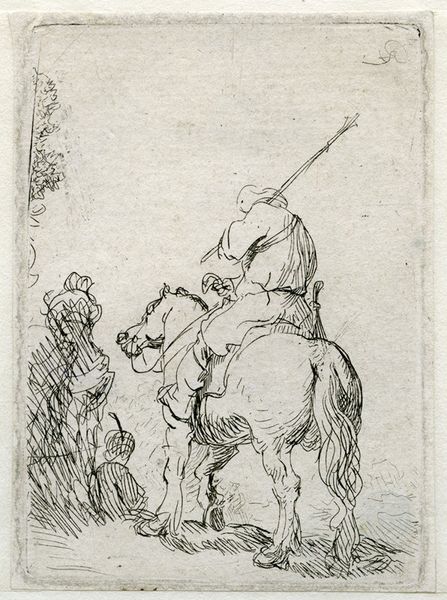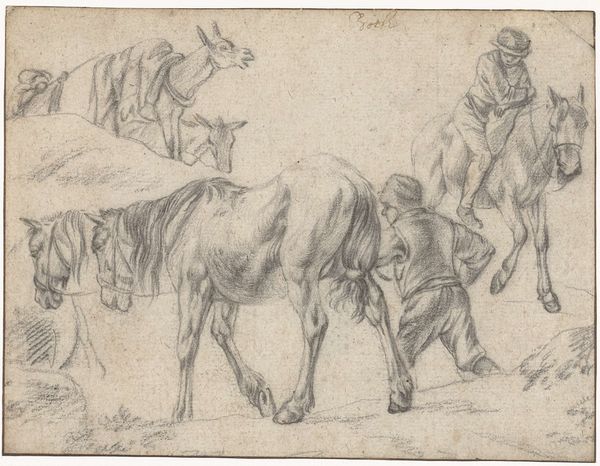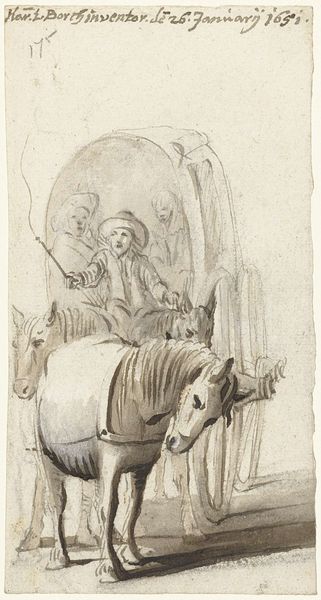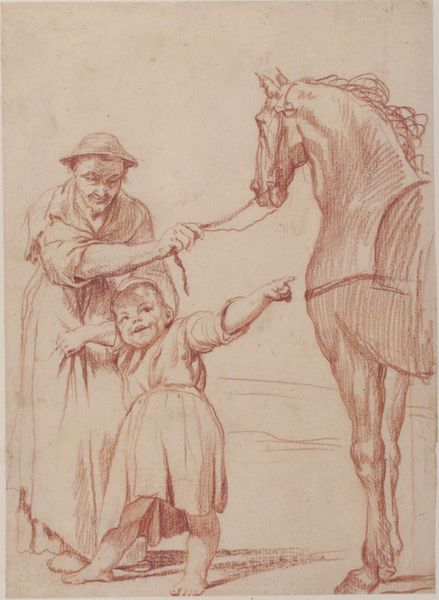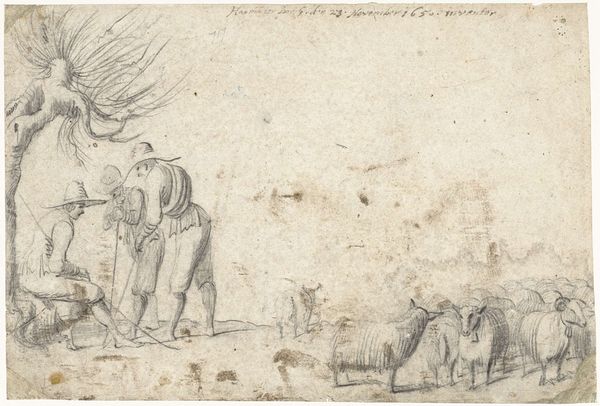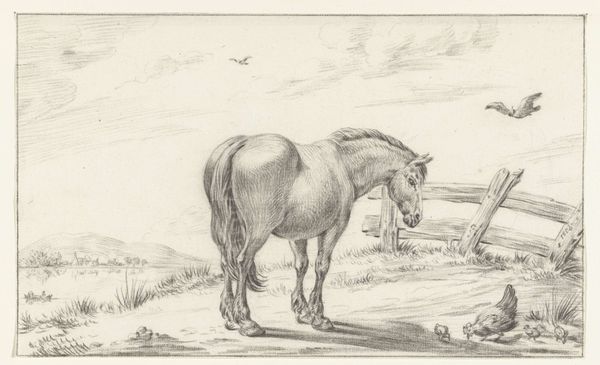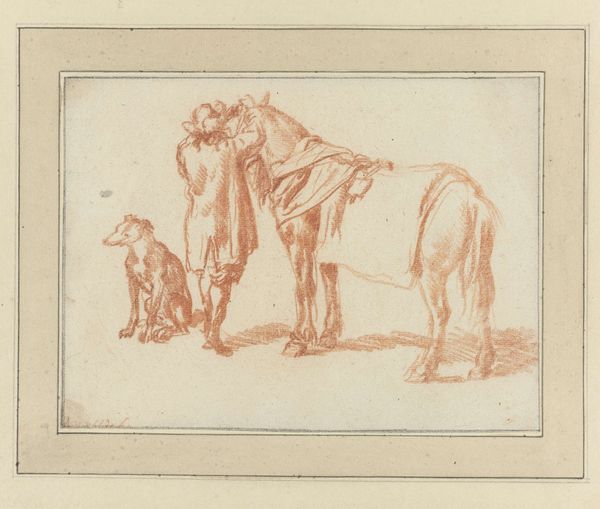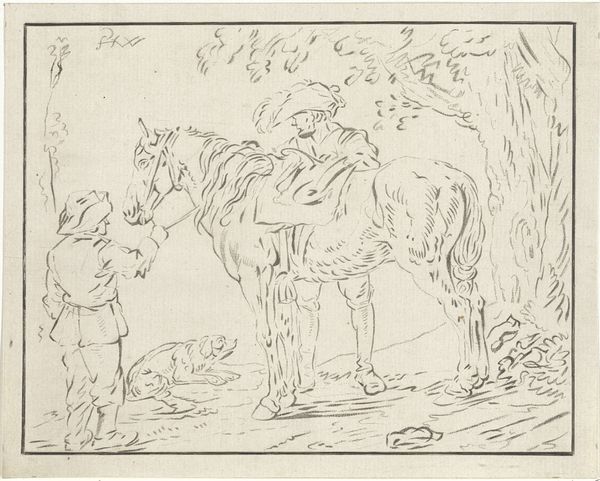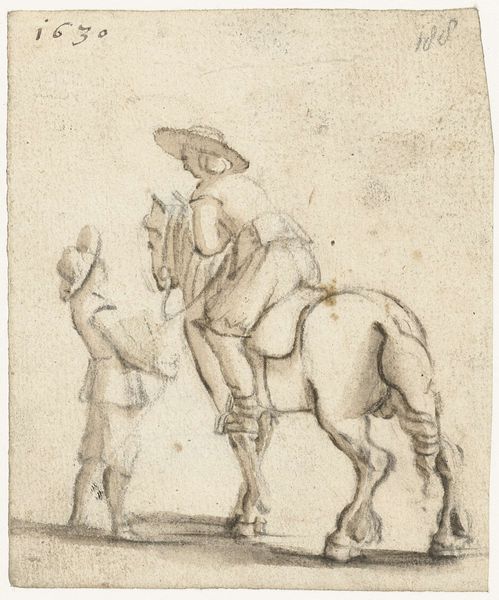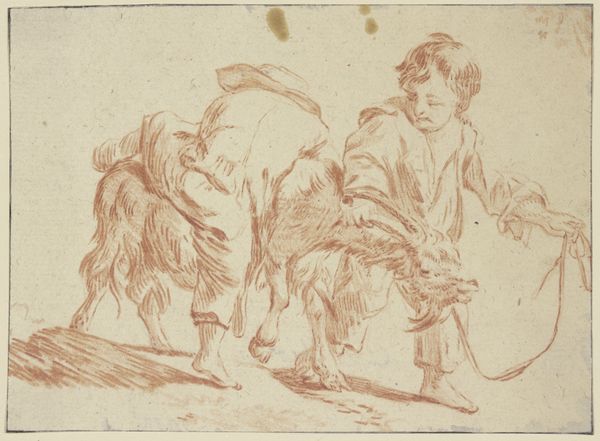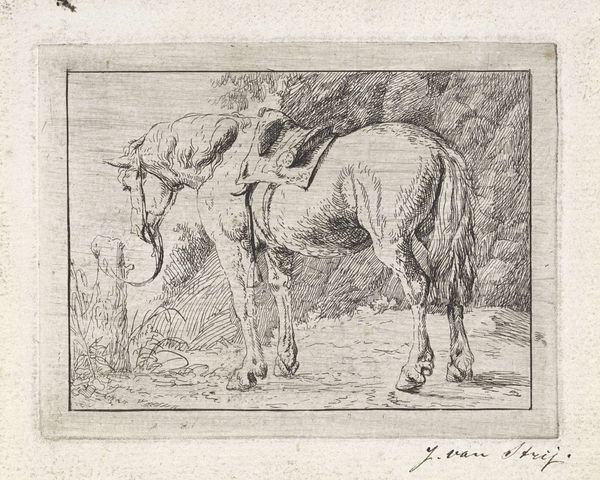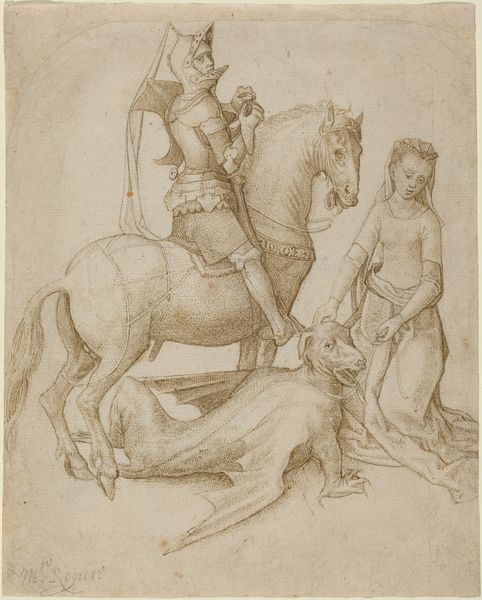
drawing, charcoal
#
portrait
#
drawing
#
narrative-art
#
dutch-golden-age
#
landscape
#
figuration
#
genre-painting
#
charcoal
#
realism
Copyright: Rijks Museum: Open Domain
Editor: This is Hendrick van Beaumont’s 1696 drawing, "Paard en een boerenpaar," or "Horse and a Peasant Couple," done in charcoal. The muted tones give it a rustic, almost melancholic feel. What's your interpretation of this genre scene? Curator: It's interesting to consider Beaumont's drawing within the social fabric of the Dutch Golden Age. The realism feels intentional, avoiding romanticizing peasant life. What does this choice of subject matter, rendered with such starkness, suggest to you about class and labor in that period? How might this resonate with modern discussions about equity and visibility? Editor: I see your point. It avoids the typical idyllic portrayals and maybe hints at the harsh realities of rural life. It’s also interesting to see these figures on what appears to be the same plane. Curator: Yes, and the composition—grouping humans and animals together—flattens a possible hierarchy. Consider how animals were viewed legally and socially during this era, compared to human property like enslaved people and indentured servants. Beaumont’s placement might subtly comment on this hierarchy or lack thereof. How does seeing it this way affect your initial melancholic reading? Editor: It shifts the mood from solely somber to quietly critical, questioning the existing social structures. Curator: Precisely. By examining historical context and intersectional narratives of labor, race, and class, we can uncover how this artwork functions as an unspoken form of activism. Editor: It's amazing how much depth emerges when you consider these things! Curator: Indeed. Engaging with these narratives enriches the viewer's understanding.
Comments
No comments
Be the first to comment and join the conversation on the ultimate creative platform.
